There is unfortunately so much waste being thrown away every single day, that the NRDC estimates Americans throw away 40% of all their food. Since it costs between $146 to $289 to feed a family of 4 every week, it means your family could be saving $58-$115 every single week by simply making sure food wasn’t thrown away. For most families, that’s a pretty significant amount of money. To address the issue, we have created this article that will help you find out the different ways you can reduce your waste at home, school and at the office.
Benefits of Reducing Waste

There are so many different benefits of reducing waste, and in this section we’ll go through just some of them. Besides the financial gains from consuming less, there are environmental and social ones too.
Environmental Benefits
The environmental benefits are plenty and some of the most important. Reducing our waste would mean the mega-landfills wouldn’t fill up as quickly as they currently do. In case you were wondering, yes that’s a problem, at least in Texas.
Reduce our energy consumption, thereby lowering our emission of green house gases in production, and it reduce the need for as many dump trucks, which would use less gas.
Reducing waste can actually benefit us in so many ways. It will not only benefit the environment, but also the financial and social aspect in your home and in the entire community too. Here are some ways on how reducing waste can benefit us environmentally, financially and socially.
A lot of the waste we produce will leak a lot of different toxic substances into the ground when being put in a landfill, or when they are burnt. The pollution it creates obviously does nothing good for the environment either, and heavy metals can end up going into unintended places.

Financial Benefits:
Waste disposal is a costly business that costs millions and millions of dollars each year. Less waste would mean less would need to run through the sorting facilities, be picked up and overall just lower costs.
Being able to reduce the waste in construction would lead to lower costs of buildings as fewer materials would be used, and fewer would therefore need to be produced.
Being more thorough in planning the scheduled work can mean fewer mistakes and less stuff that needs to be done more than one time. Every time stuff needs to rebuilt, it requires more work and more materials. This is also the case when you’re remodeling your home.
Companies are also winning the hearts of the consumers by becoming more environmentally-friend, and it’s no coincidence the triple bottom line is becoming increasingly important for companies to think about.
Less waste also ends up meaning your company will be spending less on office supplies and more.
Social:
The potential hazards of waste in unintended places is lowered when trash is both reduced and handled correctly.
Facts
By reducing our waste, we can all have an impact on improving the environment, and while your effort may seem small, it really isn’t. Anything and everything helps, and your efforts can have a meaningful impact. Americans generate an average of 4.4 pounds of trash every day, and you can imagine how cutting that in half could drastically make an effort. 4.4 pounds over the course of a year comes out to 1606 pounds of trash on average per American, halfing that would equate to 803 pounds.

In comparison, a Thoroughbred horse weighs about 500kgs, which is about 1100lbs. By saving 803 pounds of waste, that would equate to roughly 72% of a Thoroughbred horse in terms of weight.
When waste is being produced a lot of it goes into the landfills. With the US producing upwards of 400 million tons of trash every year, you can probably imagine it takes up a bit of space. In comparison, the titanic weighed 46,328 tons, and the waste is the same as the weight of 8,600 titanic ships, simply with the waste produced by the US alone.
What you might not know is that the EPA estimates 75% of waste to be recyclable, but we’re recycling less than half of that, at 30% of all the waste.
Paper cups in offices make up a significant amount of waste every single year. If you drink coffee everyday like myself, you’re at least using a cup every day, and maybe even more. In fact, office employees use 500 paper cups each. All these take up space in landfills, and if you either substitute them with a normal reusable cup or reuse the paper cups, you can save a lot of waste right there.
We didn’t use to waste this much, and in fact in 196o, the amount of waste per person was only a third of what it is today.
[bctt tweet=”We have tripled the amount of waste we create since 1960.” username=”ContractorHelp”]
If you look at the amount of waste that is generated on average per person, the United States is far ahead of other countries.
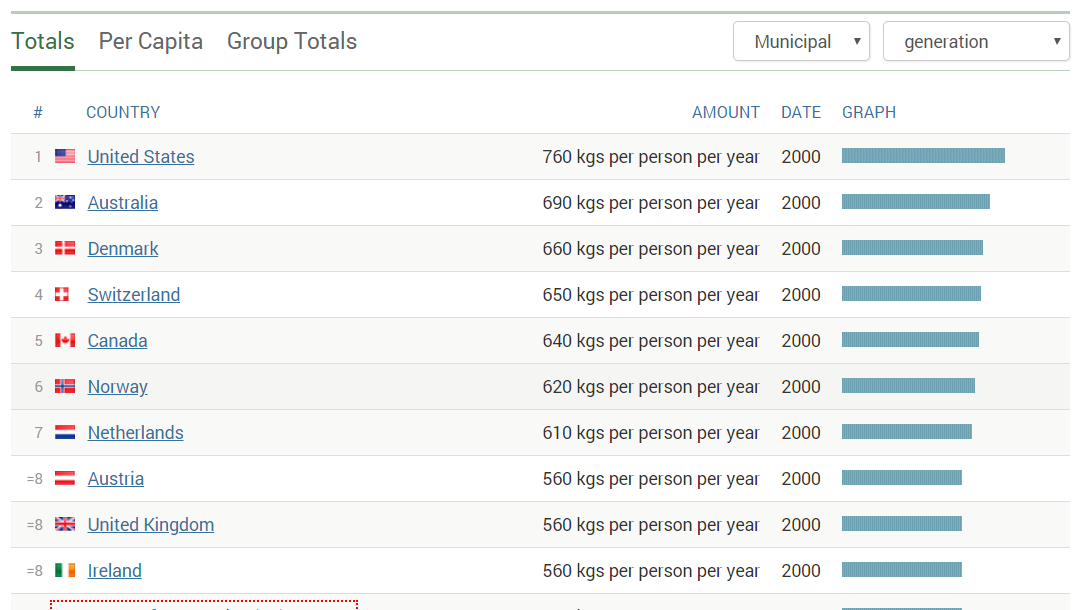
Even compared to Australia, Americans produce more than 10% more waste every year, and 35% more waste per person than a company like Ireland, which is the 8th highest waste producer. The picture is from Nation Master.
The 17th highest producer of waste per person is Japan, although they only produce 410kg per person per year, meaning your average American produces more than 85% more waste than Japanese people.
Plastic bags are unfortunately a real problem, especially when they’re not disposed of correctly. Your average person uses 150 of them every day.
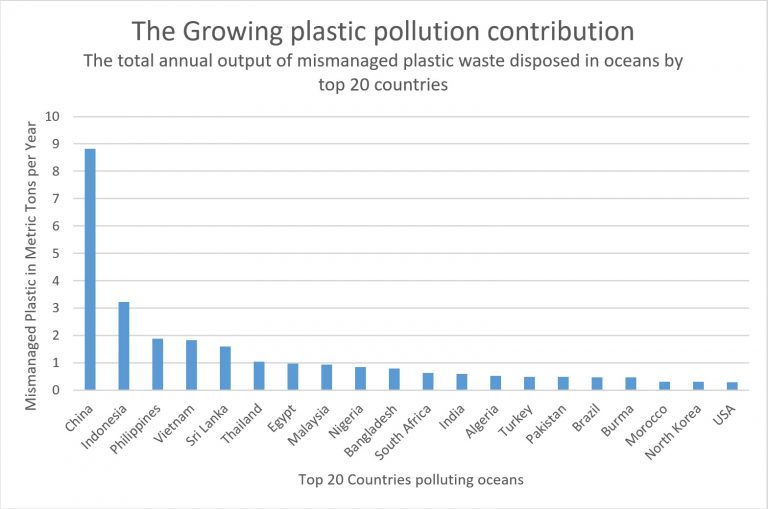
While using plastic bags is definitely not good for the environment, the issue of mismanaged plastic is very high in China at almost 9 metric tons per year.
Even if we should aim to reduce our waste and consumption overall of products, 90% of the plastic that goes into the ocean, which you have probably heard is an issue, comes from 10 rivers in the world.
There are more than 2,000 active landfills across the US. Take a look inside one of them right here.
Those are just a few of the stats you could be affecting by reducing the amount of waste you generate
Recycling
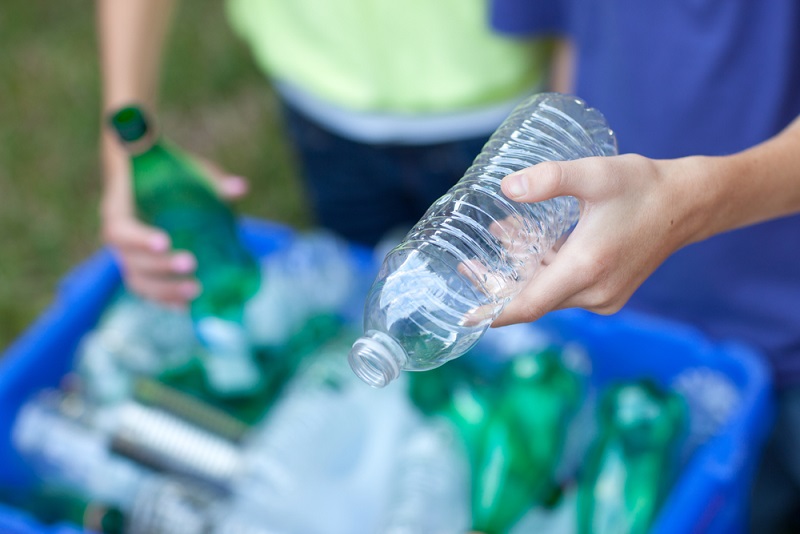
With 75% of waste being recyclable, it’s time you start making an active effort to do your part. Recycling truly doesn’t take much of an effort, and it means that the earth’s resources will be reused rather than simply going into a landfill. The existing materials will be turned into new ones that will serve new purposes, and it will lower the overall amount of energy that you’re using. This lowers greenhouse gases, which helps slow down global warming.
You can start recycling today with this extensive guide.
Biggest Sources of Waste at Home
When you’re at home, that is where a lot of your waste is naturally coming from since you’re not only cooking but doing other things too.
A thing that wastes a lot of energy is poor usage of fridges. It’s a better idea to only open the fridge when you know what you want to keep it from letting out cool air for longer than necessary.
You should stop buying the cheap light bulbs for a reason. Because they’re not worth it. A cheap light bulb will cost you $135 more than an LED over its entire life. While they will be more expensive when you initially buy them, they use significantly less energy when providing almost the same amount of light.
If you have a bad habit of falling asleep with the TV still being on, you should know that it costs you money in wasted electricity. More precisely about $55 per year. If you know you do that commonly, at least set the timer on the TV so that it will automatically turn off after a certain amount of time. It will also mean you get better sleep without the sound and light it creates.
A programmable thermostat can save you significant amounts of money every year on your already high heating and cooling bill, and there’s no need your home should be keeping its perfect temperature while you’re at work. Get a programmable thermostat installed and you’ll see your electrical bill fall significantly, even right after the installation is done and set up properly.
While we all love a good cake, if you’re making them while it’s the warmest time of the year, your air conditioning unit won’t just have to fight the temperature from the outside, but it will also be competing with the oven too, which is a recipe for wasting electricity.
Using the fan can provide a nice breeze and it’s cheaper to use than the air conditioning unit to stay cool. Unfortunately people forget to turn it off when they’re not using it, which is wasteful.
Air filters not only help improve the air quality in your home, but they also help your unit run efficiently. By not replacing the filter, you will be inhaling a significantly higher amount of dust, and your unit will need to work harder to push the air through a dirty filter, meaning less efficiency.
The absolute easiest one that people should be doing but don’t is to turn off lights when they’re not being used. There’s no reason why they should be on if it’s in a room in your home that you’re not even in. The only reason you have to have lights turned on when no one’s there is when you’re on vacation, and you want possible intruders to believe someone is there.
Types
To get a better understanding of the different types of solid waste, we have included a picture from MIT that you can study. It explains the different types, and if you read through it, you will probably realize that you could be limiting the amount of waste you create in different categories.

Picture from MIT.edu
How To Reduce Food Waste In Restaurants
If you run a restaurant, you know the importance of working on reducing the amount of waste you’re generating for several different purposes. Start out by doing a waste audit to try and determine what your biggest waste category is. For that, you will need to categorize the different waste sources, which can be done by having different containers that you throw the different waste into.
Some of the tips for lowering your generated amount of waste include changing your menu. You should figure out which things are causing the most amount of waste and take appropriate action to fix this. If people aren’t bringing their food home with them, you can look at the serving sizes and see which dishes people don’t tend to finish. By adjusting your menu and using fewer basic ingredients, you’re also less likely to have leftover ingredients go bad simply because you had a hard time estimating the demand for those dishes.
Take a good look at what people are actually ordering versus the special ingredients that you need to purchase in order to be able to cook those few dishes. The simpler the selection of dishes, the less likely you are to throw away a lot of ingredients every single day. If you choose to have dishes on the menu with either a lot of similar ingredients, or at least similar perishable ingredients, you’ll be wasting less.
Did you know that food waste has grown by more than 200% since 1960?
If there’s a dish that you want to keep on the menu but you notice that it tends to lead to high amounts of waste, try buying smaller batches of the ingredients that often go bad.
It’s important that you communicate the importance of reducing waste to your employees so that they’re also available of it, and you can even communicate it to the customers too. For example, you can let them know that they should ask for a refill since you work hard on reducing the waste and your restaurant’s impact on the environment. Getting a green image among consumers can also be important for your brand positioning.
High quality kitchen equipment can help reduce waste in different waste. First off, high quality appliances may not just have better energy-efficiency and last longer, but if you get the right equipment to get a certain task done at the restaurant, the person doing it will not just be able to do it faster, but also more accurately, thereby resulting in less waste and higher utilization of the things that you’re buying.
If you’re running a buffet, a smaller plate size will force people to go and get more food more frequently. While it may be an inconvenience for the customer, it will lower the amount of food consumed per person, and likely also the waste per person too. When you set up a sign explaining that you are using smaller plates to reduce waste and that they can get bigger plates simply by asking, they will be more likely to be understanding of the initiative.
Vegetables, fruit and perishable products should be stored properly, not just for hygienic reasons but also because it will make them last longer. There are tips to lower the amount of waste poor storage creates.
If we reduced food waste by 15% in the United States, the lowered waste could feed an additional 25 million people.
How are you currently doing inventory? Make it a tradition to do it more frequently just to see how your assumptions hold up against what you believed would be the case. It will not only make sure you’re not wasting a lot of product, but it will also ensure that you can replenish the things that need to be replenished and your waiters won’t unfortunately have to tell customers that you’re out of the thing that they want.
An important part of inventory checks is to make sure that the things that need to be consumed first will be put at the front, so they’re taken first. That ensures that there aren’t ingredients on the back shelf that turn bad just from lack of oversight.
Construction Waste
Construction is a major source of waste that needs to be acknowledged, as there’s 8,000 pounds of waste for your average home construction. This is why working with the right construction contractor can not only help you stay on budget due efficient usage of the material.
A good contractor makes less mistakes which results in fewer things needing to be redone.
To not only stay on budget but also limit your construction waste, you should put more time into the design part of the project to make sure that you won’t be making changes along the process later on. The better you are at accurately planning from the start, the more flawless the whole process will be and the less waste there will be.
By using standard lengths in your designs, which includes ducts, siding and more, will allow you to buy more regular materials, and do less adaptions to the materials you do purchase. Since adaptions will result in waste, you want to design with standard measurements in mind.
Think of ways that you can reuse materials. If you’re a remodeler working on different projects where one home’s waste could be reused in another home, you will save money on materials and help the environment. A skilled carpenter can make creative use of seemingly unusable recycled construction materials.
At the very least, you should try to make sure that different piles of waste are sorted appropriately, so that they can be recycled with the highest amount of efficiency. This means wood goes in one pile, metal in another etc.
At Work
A lot of waste comes from the workplace, including, as previously mentioned, coffee cups. Reducing waste at work can even turn into a team building exercise among colleagues.
You can make a change by working on printing less, and the stuff that you in fact print, you can print on both pages of the paper. Doing this, you will use half the amount of paper. This also applies when you’re making copies of things.
You can reduce your need for packaging fill by using your shredded paper as fill in boxes.
How are you currently using the boxes that come into your office? Are they simply being thrown away currently or recycled. From time to time, you probably need a box, even if you don’t ship out actual products and then you can simply go and get it from that storage room.
From the everyday smog to the increasing threat of global warming, it just makes a lot of sense on why we should clean up now and do our part in reducing waste, especially in our workplace. Here are some tips on how you can reduce waste at work. If you have a place in your office, such as a small room where you keep these incoming boxes, you can just go there and pick one up when you need it.
Make it easy to recycle too, and include a list of the things that should go into recycling, as to not contaminate the recycling bin. While there are a few paper cups that can be recycled, most can’t because of the internal plastic layer that they have been coated with to allow the cups to hold the liquid.
You should encourage black and white color printing rather than color printing as it will use less ink and save you money too. It is cheaper too.
If it’s possible for employees to get to work by walking or bike riding, you should encourage them to do so. Otherwise, public transport is also great at lowering your carbon footprint, since it is more efficient. If you’re car pooling it may not be the case, but traditionally, cars only have one person inside of them making their carbon footprint per traveled mile per passenger very high.
Even if you need to print on occasion, use the cartridges that can be recycled and refilled to not just lower your printing cost but limiting the amount of waste you produce.
Getting recycled paper may also suffice for your needs, and help how much you contribute to landfills. In fact, paper and cardboard alone account for 26% of the volume of things going into landfills. Make it a company policy to avoid chlorine-free paper as it can have negative effects on the environment.
Food
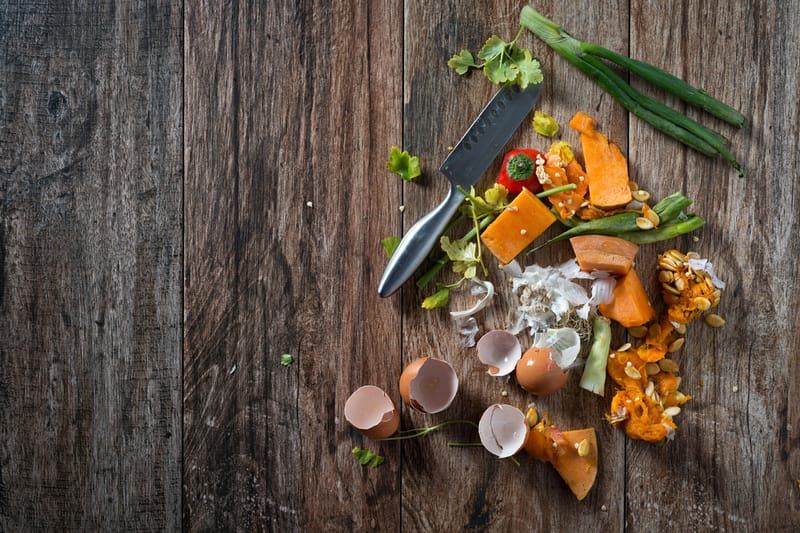
There area so many ways you can minimize the amount of food you waste every day, and here are some of them. You can also take a look at these great recipes and these that will help ensure that you throw out less on a daily basis. Being considerate of the environment does not need to come at the expense of your food tasting great!
The first thing you need to keep in mind that educating your family is the single most important step you can take. Do things to increase the awareness of the importance of reducing food waste.
Learn how to implement FIFO in your kitchen, which also applies to food. When you’re restocking the fridge with the products you just bought, make sure to put the new ones in the back of the fridge, and move older ones towards the front, or you might just miss them.
Before you go grocery shopping, you should make sure that you don’t go there while you’re hungry or you’ll return with more stuff than you were planning to. In addition, make the list for the coming week and only shop what’s on the list. If you need snacks, put them on the list, but if you can get used to shopping only from a list you will save money too.
Depending on the amount of ingredient you need, consider which volumes you’re buying at the store. If you’re only needing a couple of tomatoes for something and you generally don’t eat tomatoes otherwise, it’s best to just exactly the amount you need rather than stocking up hoping you’ll eat the remaining ones too.
Even if you are ambitious about trying to change your eating habits, don’t become overly ambitious. If you’re not used to eating a lot of fruit and you suddenly buy a bunch, most will likely go bad.
When you throw food away, write down what it was. That way you’re more likely to remember next time you’re standing at the grocery store and you get tempted, that you actually threw most of it away last time you got it.
It’s a little bit more work, but you can write down expiration dates of the different things you get and then simply by looking at this list in the future will you be able to see what is about to go bad.
When you have leftovers that are about too go bad, find recipes that include the foods you’re trying to get rid of.
By bringing leftovers to work or school, you’re eating what you already made and you won’t be throwing it away. You will also spend less money on lunch.
You should know how to properly store the different things you buy. If you buy vegetables, putting them in the fridge will make them last longer. If your veggies are in the pantry and they look like they will soon go bad, put them in the fridge.
Care, Use and Disposal of Batteries

When you’re done with batteries, you can’t simply throw them away like you would with non-recyclable trash. There’s stuff you need to keep in mind to ensure that you’re using and disposing them properly.
First off, when there’s a battery size recommendation written on the device you’re trying to use, it’s written on there for a reason, and while it may seem obvious, this is the type of battery you should stick with.
Instead of putting the batteries in the drawer, keep them in the packaging they came in until you plan on using them, and make sure that the space they’re kept stays dry or it could ruin them. This also makes it easier to know which batteries haven’t been used yet.
When you’re replacing batteries, do so for all of them at the same time. The two batteries will generally be equally depleted and it means you need to change them less often too.
Batteries should be recycled with the appropriate local initiatives. Here’s more information on how to dispose of them.
If you know that you won’t be using a device for a year or more, because you’re putting it in the attic, make sure it has no batteries inside.
Batteries should be placed away from extreme heat sources.
While you may have heard that it’s a good idea to place batteries in the fridge, it isn’t.
Before trying to charge a battery, make sure it’s a rechargeable one or you may cause it to overheat or leak its inside everywhere.
When transporting batteries, this should be done in their original container, and not your pocket or purse.
During the Holidays

Even if holidays are both busy and awesome, they’re also a time when you should be thinking about not creating unnecessary waste. It’s still very possible to have a merry Christmas while throwing away less. You can do so many things to be a little greener during your white Christmas.
Instead of buying Christmas decorations and throwing them out, try making some with recycled material or at least buy locally produced ones that haven’t needed to travel quite as far.
Use whatever you have left over for broth or stock.
Instead of using one-use wrapping for foods, put things in reusable containers.
Christmas could be the time for you to start composting. It’s not like there will be a lack of food to do so with. Before you do, read this post we wrote to know what you can and can’t compost.
Be sure that the freezer is ready for Christmas. That means eating whatever is in it and defrosting it so you won’t suddenly have so much food left that you don’t know where to store it.
Don’t use the conventional wrapping materials for your presents. Here are good alternatives you can use, including recycled wrap.
Instead of buying presents for people, you can consider giving a donation to a worthy cause.
There are a lot of presents you can give that do not involve material things but rather experiences, such as movie tickets.
Agree with your family to give smaller presents than usual, or have a green Christmas where everyone must give a sustainable gifts, like these.
In Hotels

As a consequence of all the people staying at hotels, you can imagine the natural wast that they tend to generate even if hotels are now increasingly taking measures to use less electricity, which includes only changing your towel if you indicate that you want it changed, and more.
The fact that hotels are becoming smarter when it comes to waste, is great.
If your hotel isn’t doing that just yet, you should change it so that customers indicate when they want their towels changed. This is what your sign could look like that you display to guests, which would help the environment and help you save money. The sign can be found on Grist.

When you hire a new employee, you should make it a priority to teach them about all the recycling and waste reduction initiatives that your hotel has.
The bins in your hotel should be clearly marked for both guests and employees, so that recycling is being done.
Perform a review of the things that are being thrown out, and see how you can limit the leftovers from the breakfast.
Get feedback from your staff on the different policies you’re trying out to hear how they’re being implemented, and how they feel they’re affecting their everyday life.
At Home
Your home is where you spend the most amount of time and naturally where most of your mess is created.
For non-perishable products such as toilet paper, you ought to buy those in bulk. When you know it is a product you are going to use and you have the space for it, it’s better to get bulk deals, especially if they’re on sale. It won’t just save you money, it will also create less packaging and thereby less waste.
Instead of throwing things away, see if there’s another way to use them through repurposing. Bored Panda has great examples of things that have been repurposed.
Wherever you go, bring a reusable water bottle, so you won’t be tempted to buy the ones you will simply throw away. It’s also a great way to go green and save some money.
Be conscious about your choice of products and their packaging. Try to go with ones that don’t use unnecessary packaging, and buy local products that haven’t had to travel as far.
Composting is a great way to teach your kids about becoming a little bit more environmentally-friendly. It’s an easy way to teach responsibility too.
Go through your home and find out where you are using a lot of paper and then come up with a plan for lowering that consumption with various initiatives.
Instead of buying packaged goods, go for whole foods and take the time to turn them into your own delicious edible pieces of artwork.
Buy concentrated cleaning products. You can then go ahead and dilute them afterwards but it means less product has had to travel long distances to reach you. In the diluted products, you will pay for a lot of other things too including higher packaging costs and shipping.
If you create lists that you use for things, instead of writing on a big A4 paper, cut it in half. Chances are it will fit your list anyway and it will make you use less paper.
When something breaks, look more into whether it is possible to repair it instead of simply going out and buying something new. We’re unfortunately living in a society where replacing things has become the norm. The average consumer in the United States only keeps their smartphone for 22.7 months, and it’s a massive pollution problem.
While you may not be able to always avoid the disposable products, you can look for the companies that indicate they have a green policy for their production, although it can often be confusing. Even if consumers are starting to care, companies will be forced to care when consumers do.
You might have your local coffee shop that you like going to, but bring a travel mug when you go there and asking that they put the coffee in that instead to reduce your footprint.
Disposable razors may be nice and tempting, but get the battery-operated razor, and make sure to get a good one.
While you may think that you’ll become a handyman and spend all your weekends upgrading your home and increasing its value, if you’re undertaking a project where you don’t have the tools, consider borrowing them from a friend rather than going out and buying them expecting to use them again soon with your new attempt at a passion for home improvement.
Scrutinize your efforts at recycling and find out how you can do better. There are a lot of things that can be recycled that people don’t know about.
Instead of throwing out the physical mail you get, gather it and see who sends you the most of mail. Preferably, all your mail should be sent as emails and not as physical letters, but at least the ones you receive a lot of communication from.
See if the current cartridges your printer uses can be refilled, which will also make them more cost-effective than the ones you simply throw away.
Go through your trash and find out what you’re throwing away. Find out which of these things you can replace with reusable alternatives. We often throw away a lot of disposable products that could be bought in their reusable versions instead.
If you like tea, get loose-leaf ones instead and save on packaging.
Gift bags should be saved, especially the cool ones, which can then be used for other purposes.
In the process of analyzing your trash, see if there are things that you may give away instead of throw away. You can also try making some money by selling it at a garage sale.
In the Kitchen or When Eating
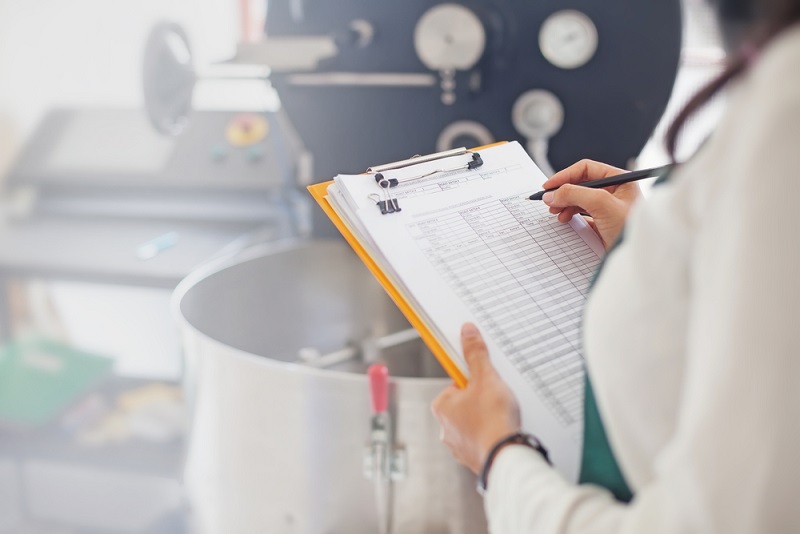
When we’re cooking, we do a lot of things that will create unnecessary waste. That also includes in all the other surrounding processes that somehow lead to us eating, like going to the grocery store or going to a restaurant.
Do better waste sorting with a system like this one from Qualified Remodeler.
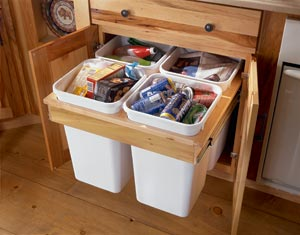
When you go to the grocery store, make sure that you are not simply using the disposable bags they have. Plastic bags are a major issue. Here’s a guide you can use to find the best reusable bags for your needs.
When you go to a restaurant to eat, and you know they have big portion sizes, you can bring your own containers instead of using the disposable options they have.
This also includes having a set of silverware in your car. That means that if you go and pick up food that you intend to eat on the road, you won’t need to use their disposable cutlery.
If you cook a lot with grains and beans, did you know that you can significantly cut cooking time simply by soaking overnight? This will mean your stove uses less energy too.
Cut your use of paper towels and get a sponge instead that will last for a longer time. To make sure they do not become bacteria hubs, boil them for 5 minutes to get rid of the bacteria.
Electricity

We waste a lot of electricity every single day. With a few conscious action you can do a lot to change that. Rather than listing all the different initiatives here, we encourage you to read our specific post on the topic. There’s a lot of ways you can lower your heating and cooling bill by installing a programmable thermostat, which is just one of many initiatives we recommend that you look into.
It does not need to be hard and it can save you money every single month.
Packaging
Packaging can make up a significant amount of the cost for companies, and by redesigning how you think of packaging either as a consumer or company will allow you to save. Loose products can often sell for less simply because they don’t have the same costs, and it helps the environment.

As you can see, according to Valley Box, packaging can be up to 10% of the overall production cost of some products.
You should do what you can to purchase in bulk, limit packaging, bring your own bags or other storage solutions, buy from environmentally-cautious companies and limiting your use of disposable products.
Food Waste Recipes

There are great things you can make that will taste delicious and get rid of some of those things people have in their fridge. Be sure you also know how to appropriately store the different things you have in your fridge.
The recipes below often include a lot of the products that could otherwise just be going bad.
Smoothies can include a lot of products that you would otherwise just get rid of. This is how you can avoid that from happening.
French toast is good when your bread is about to go bad.
Bananas are another one of those products where even if you eat them pretty consistently, you might suddenly end up finding yourself having too many and they now seem to go bad really fast. Use them in banana muffins to avoid that you’ll have to throw them out.
You no longer need to throw out vegetables. All you need to do is make sure to pickle them.
Water
Water waste can increase your bill if you’re not on top of it, and we recommend that you take appropriate action to ensure you’re not just unnecessarily using water. A terrifying fact is that we use 127% more water per person now than in 1950. Read more about some water saving tips that can easily be implemented in your life with no hassle.
Instead of rinsing a razor when the water is running, do it in the sink.
Make sure that you turn off the water when you’re not using it, which includes during cooking and when you’re brushing your teeth.
Insulating your water pipes will help ensure that the heat loss is minimized. You should also periodically be checking for both water leaks and increases to your water bill. An increase in your water bill could mean that the pipes are leaking, and even if you can’t personally find the leak yourself, it may still be there. Have a plumber come and check it out, as the leak could be happening outside your home. Leaking water can also cause expensive-to-repair water damage to hardwood floors and other things.
Don’t throw things in the toilet that aren’t meant to go there. For one, it could cause clogs, and it may be hard for the water filtration companies to deal with it. If you throw something in the toilet and flush, you’re also using a lot of water simply to dispose of a thing you could otherwise have thrown in the bin.
Get good water-saving shower heads, like one of these ones.
It may be hard to get up in the morning and you may be enjoying a nice, long refreshing shower, but it will not just use more water but also increase your bill. Learn how to take shorter showers and you’ll also have more time for other things.
In the Yard
Yards generate a good amount of waste that you will need to do something with, and you can do things to not just minimize the amount of maintenance you need to spend on your yard but the waste it produces too. Work with a landscaping contractor to implement the ideas you do not want to do yourself.
By reducing the size of your lawn, you reduce how long you will spend on mowing it and how much clippings you end up with.
When you cut trees or plants, see if there is someone locally that could have any use with them.
You don’t need to drive everything from your lawn to the landfill, you simply need to start composting, and you’ll also be left with some amazingly nutritious fertilized in 3-12 months.
When you decide which plants to grow in your yard, make sure they are low maintenance. Be sure that they are also plants you will either appreciate looking at or that they have a functional purpose, like the ones recommended by Nadine Lynn.